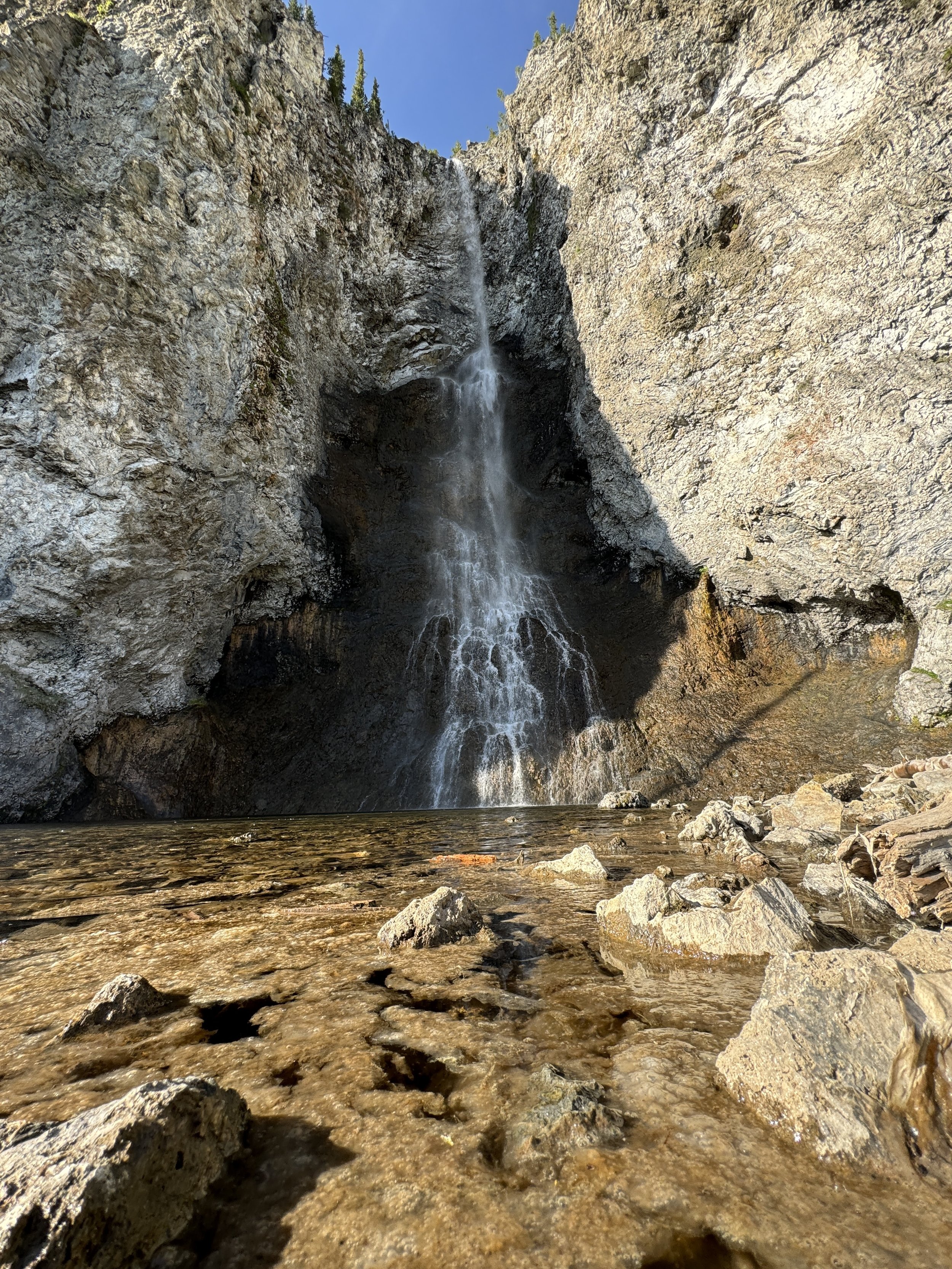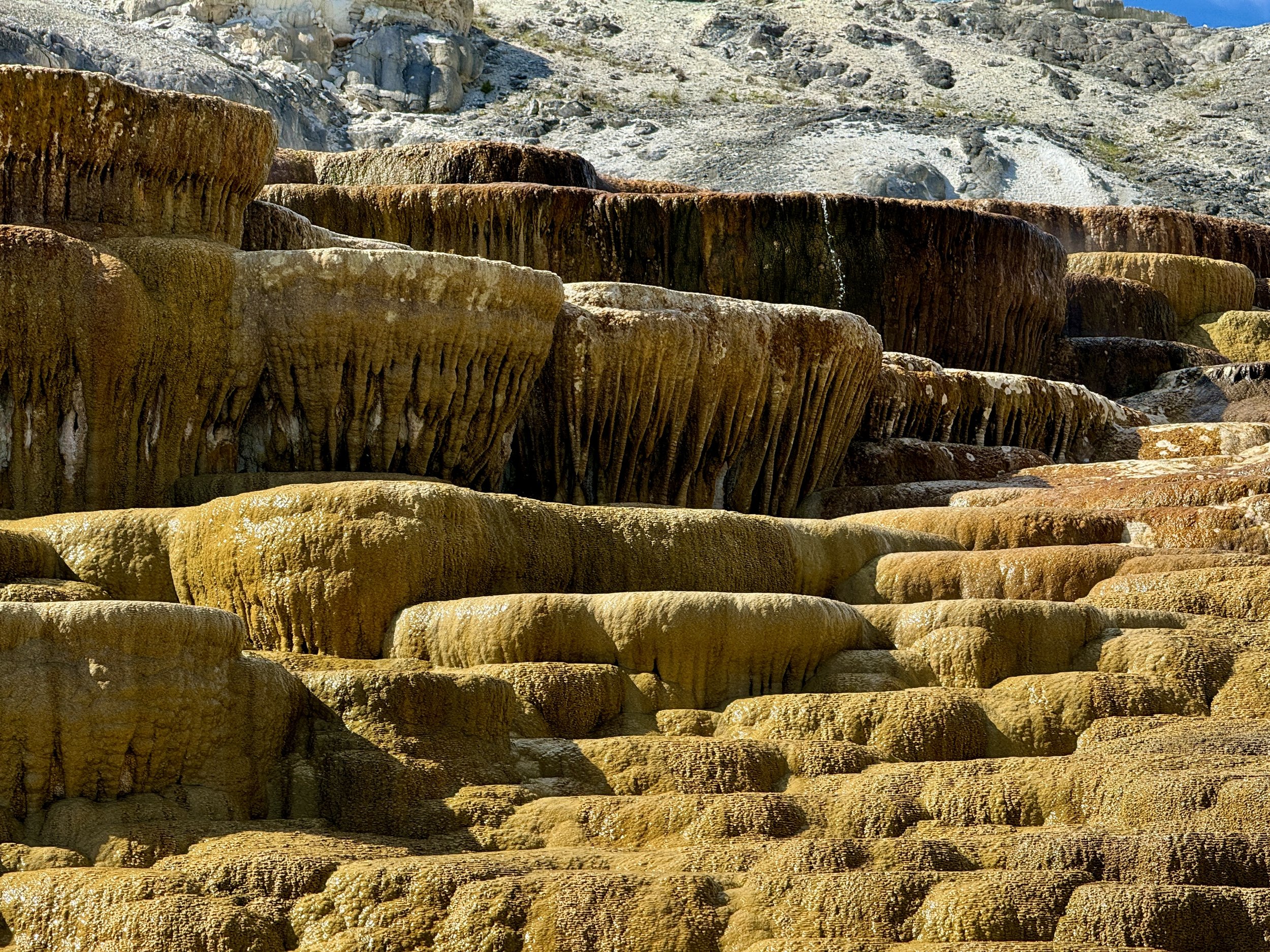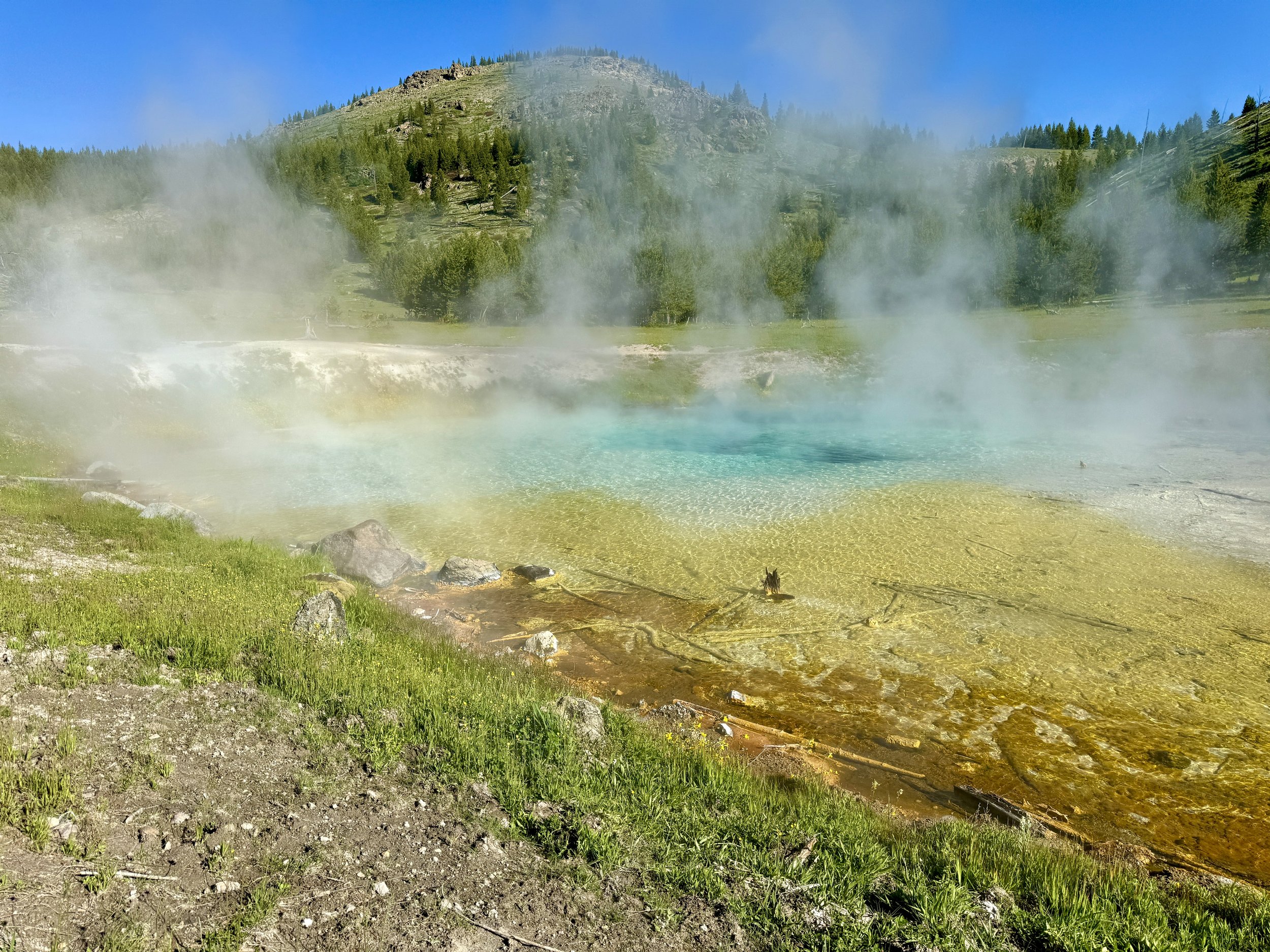Geysers, Bison, & Bears, Oh My
Yellowstone National Park
We love to explore the National Parks, and being out west, Yellowstone was definitely on the list. Yellowstone is considered the first national park and covers an area of approximately 2.2 million acres spanning across the states of Wyoming, Montana, and Idaho. The park is known for its stunning landscapes, geothermal features, and diverse wildlife.
Grand Canyon of Yellowstone
Yellowstone is one of the most visited parks in the US and its unique geothermal features is one of the main draws. Everyone who visits the park, goes to see Old Faithful, the most famous geyser in Yellowstone National Park. It's known for its regular eruptions of boiling water and steam that occur approximately every 90 minutes and can shoot water between 100 to 185 feet into the air. It is this predictability that gives the geyser its name. Just remember, when viewing this geyser, you will be surrounded by hundreds of other park guest.
Old Faithful
If you are willing to get up early and venture off the main path, you may get the chance to see geysers in a more peaceful setting. We took such an opportunity and hiked the fairy falls trail continuing past the falls to Imperial Geyser. While this is a popular trail, by going early in the morning, we were ahead of the crowd and managed to visit the falls with just a handful of people and the geyser with just one other hiker. With the pristine water, vibrant array of colors, and almost constant eruption, the Imperial geyser is well worth the extra effort to reach.
Fairy Falls
Imperial Geyser
You’ll also want to stop at the Grand Prismatic overlook for a magnificent view of this iconic geothermal feature.
View of Grand Prismatic from the overlook
Other notable geothermal locations to visit in Yellowstone are Mammoth Hot Springs, Norris Geyser Basin, and Artist Paint Pots. Keep in mind that these are very popular stops and draw large crowds, but if you get an early morning start, you can enjoy a quieter atmosphere.
Mammoth Hot Springs
Wildlife viewing also attracts many visitors each year. Yellowstone National Park is renowned for its diverse and abundant wildlife from the large mammals such as bison & bears to the smaller variety of birds and marmots. Bison, often referred to as buffalo, are probably the most iconic inhabitants of Yellowstone National Park. Bison roam freely in the park across the vast grasslands, meadows, and even through geothermal areas. Guests to Yellowstone often have the opportunity to see these majestic animals up close, often along the road from the safety of their vehicles. Of course, this also leads to bison traffic jams when bison decide to roam close to or cross roads. We saw bison every day we spent in the park, mostly from our Jeep, but also a few times while hiking. On one hike, we had to venture off the trail to accommodate a bison herd, with guidelines advising a distance of 25 yards. On the same hike, we had lone bison take issue with us walking the same direction even though we were over 50 yards away. He actually turned to face us and charged a few feet in our direction. With bear spray in hand, we slowly backed away and decided to again leave the trail for a new direction. While we weren’t ever in real danger, it did get the heart rate elevated.
Bear sightings are another exciting and memorable experience in the park. I was grateful that my two sightings both occurred from the safety of the Jeep as guidelines for bears are 100 yards distance, unlike Steve and our son Nick that got a big thrill when a black bear wandered into their backpacking camp one evening. My first glimpse was the unexpected sight of a black bear swimming across a river. It is amazing that they are quite adept swimmers.
black bear taking a swim
Second sighting was observing a momma grizzly on an early morning stroll with her three cubs. It was enjoyable and peaceful to watch them in the first sunlight of the day.
Not quite as iconic and thrilling as bison and bears, we did encounter a variety of other animals, too many to list all of them separately, but here are a few. A late evening drive through the park allowed us the opportunity to see elk and pronghorn.
pronghorn
Our hike across the Lamar Valley, found us surrounded by playful unita squirrels. They scampered from burrow to burrow, stopping to “stand up” and look around. Hiking another day, on big horn pass, we were greeted by a a marmot at our turn around spot. Scurrying across the rocks, he appeared to stop and pose for photos.
marmot
Visiting Yellowstone National Park is an unforgettable experience of natural wonder and wildlife. Whether marveling at geothermal wonders, encountering wildlife in their natural habitats, or simply soaking in the park's serene beauty, a visit to Yellowstone is a worthwhile journey into one of America’s best national parks.















































